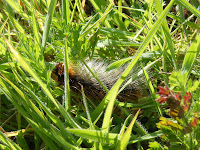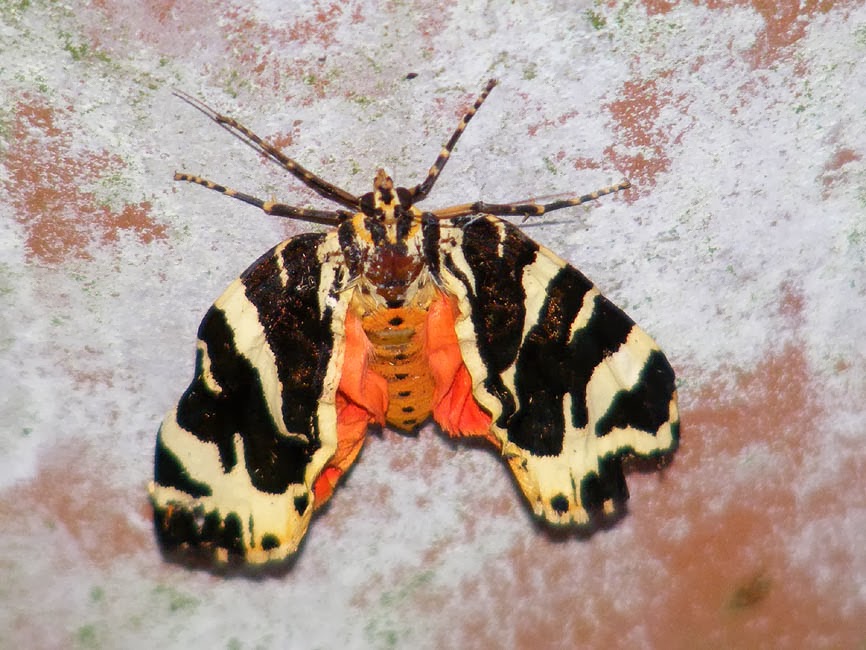Garden Tiger Arctia caja
The brown and white pattern on the forewings and the black spots on an orange background on the underwings are very variable. Occasionally the forewing has no white and the underwing is yellow. Adult moths can be seen June-August. Larvae are very commonly encountered crossing paths and tracks in the spring. They are probably the hairiest caterpillar you will ever encounter, with tawny hair below and forming a collar, and black with white dots covered in long pale hair on the back. There is a very good post on Aigronne Valley Wildlife, who have been moth trapping in the next valley to us, showing how variable the Garden Tiger can be. Also covers French name and habitat.
Photograhed by Loire Valley Nature:
Photographs numbered from left to right and top to bottom. 1-4 Garden Tiger caterpillars photographed in a vineyard near Saint-Aignan (strictly speaking just outside the area covered by this blog because it is in 41, but still in the Touraine) April.




Jersey Tiger Euplagia quadripunctaria: Adults active from June to September in dry open woodland and scrub. Both day and night flying.
 |
| A female Jersey Tiger. This specimen is deformed, possibly the result of some trauma in the cocoon, or immediately after emerging. |
 |
| A female Jersey Tiger. This specimen is deformed, possibly the result of some trauma in the cocoon, or immediately after emerging. |
 |
| Jersey Tiger, nectaring on Wild Oregano Origanum vulgare and showing its underside. |






Is there any easy way to tell the sex of the Jersey Tigers?
ReplyDelete